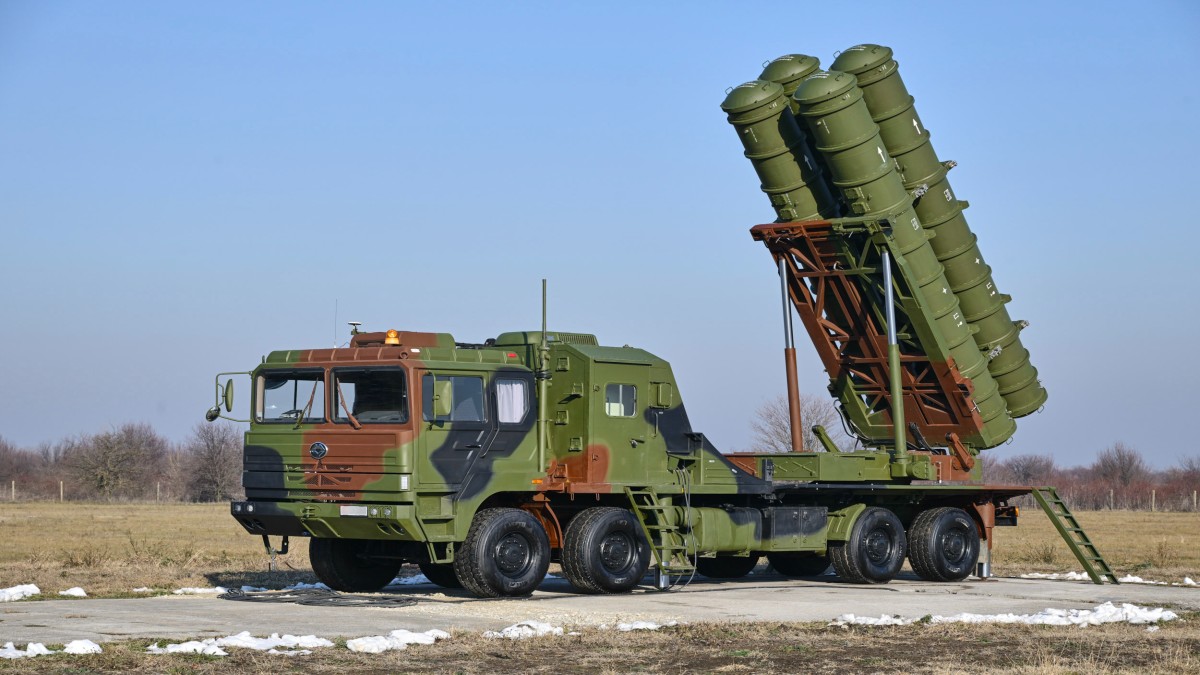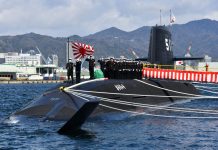Unable to crack big fighter jet deals, China is now highlighting the capability of its air defense systems by drawing attention to Siberia’s induction of the Chinese HQ-22 Air Defense System into the same unit that downed a US F-117A stealth aircraft in 1999.
Chinese state-owned publication Global Times, which strictly parrots the narrative of the Communist Party of China (CCP), published an in-depth report on Siberia’s induction of the FK-3 (an export variant of the HQ-22 or an equivalent of the Soviet S-300), along with an exclusive interview with the Commander of the battalion that operates the system.
The report highlighted that the 250th Air Defense Missile Brigade is the same unit that shot to fame in 1999 after it shot down the US F-117A stealth fighter using a second-generation S-125 missile during NATO’s bombing of the Federal Republic of Yugoslavia.
NATO, led by the United States, launched ‘Operation Allied Forces’—a large-scale bombing campaign against Yugoslavia on March 24, 1999, based on information that the Serbian Army was conducting an ethnic cleansing of the Albanians in Kosovo, as explained in detail earlier by the EurAsian Times.
On a rainy night on March 27, 1999, an archaic Soviet-era Pechora air defense system did what had not been done so far—shoot down a stealth fighter.
The US Air Force’s F-117 stealth fighter Nighthawk, the supersecret “Black Jet,” was on a night mission in Yugoslavia when the Serbian Pechora shot it down. The pilot had to eject behind enemy lines.

“Over two decades later, this well-known Serbian unit has again drawn international attention by showcasing its newly acquired Chinese air defense missile systems,” the Global Times report stated, adding that this comes at a time “when China’s made-for-export equipment such as the J-10CE fighter jet has recently scored outstanding performances in recent foreign combat operations.”
The above excerpt from the GT report is in line with China’s continued amplification of Pakistan’s unsubstantiated claims regarding the Pakistani Air Force J-10C’s downing of three Rafale fighters of the Indian Air Force (IAF) during the recent Indo-Pakistan military clash.
Besides a coordinated campaign aimed at positioning the J-10C as a better alternative to Western jets, Beijing appears to be simultaneously promoting its air defense systems by eulogizing their role in service with Siberia.
Chinese AD System’s Popularity In Siberia
Like other Eastern European or Balkan countries, Serbia’s military is built on Soviet technology, based on years of political and cultural ties with Moscow. However, Russia’s grinding war in Ukraine has pushed Serbia closer to China.
Currently, Serbia is the only European country using Chinese weapons, notably drones and air defense systems.
In 2019, Belgrade purchased China’s FK-3 surface-to-air defense system. It is an export version of the HQ-22 missile system comparable to the Russian S-300.
The system was delivered by China in 2022 by six Y-20 cargo aircraft. President Aleksandar Vucic of Serbia has regularly described the system as a “powerful deterrent” against potential attackers, referring to NATO’s bombardment of Serbia.

During a military parade in the city of Kruševac on the occasion of St. Vitus Day, Serbian Prime Minister Milos Vucevic announced that the country would display the “recently acquired” HQ-17AE short-range anti-aircraft defense system from China.
This was the first disclosure of this purchase. Vucevic emphasized that HQ-17AE systems would enhance Serbian airspace security and be an ideal complement to the FK-3.
The Siberian polity, as well as the military, has heaped many praises on the FK-3. In late 2024, the FK-3 was featured on the website of Serbia’s Defense Ministry, which referred to it as a “milestone in air defense systems.” “It is a great honor to be the commander of an air defense missile battery and to work on the most powerful air defense missile system that our country has,” stated Missile Battery Commander Captain 1st Class Stefan Manić.
Separately, the Serbian Ministry of Defense announced in a statement that the Republic of Serbia’s airspace management and protection system has been greatly enhanced by equipping the Air Force and Air Defense with the modern FK-3 air defense missile system.
Serbian AD Unit Commander Praises Chinese ADs
The GT report includes excerpts from a recent interview with the Commander of the 2nd Battalion for Air Defense from the 250th Air Defense Missile Brigade, LTC Dalibor Aleksic.
The unit is happy with the FK-3 and HQ-17AE air defense systems’ combat capabilities, performance, dependability, and ease of use and maintenance, according to Aleksic, who stressed that his experiences as a “user” of these two types of air defense missile weapon systems are very positive so far.”
“Equipping the Serbian Armed Forces with the FK-3 and HQ-17AE air defense systems primarily improved the efficiency of the organization of the air warning system, which has proven to be one of the decisive factors for achieving success in modern conflicts. It also improved the capability to protect our forces and all important facilities in the territory against all types of air attack weapons, over a wide range of distances and heights, with operations carried out both statically and while in motion,” Aleksic was quoted as saying.
Aleksic also reportedly told GT that he is most fascinated by the HQ-19 AD system. “The weapon system that fascinates me the most is the HQ-19 anti-ballistic missile system,” he told the Chinese publication.
The HQ-19 anti-ballistic missile defense system, which debuted in the China Air Show 2024, is rumored to be the Chinese alternative to the US Terminal High Altitude Air Defense (THAAD) system.
This system is presumably designed for the exoatmospheric interception of ballistic missiles and will operate as the mid-tier of the Chinese Ballistic Missile Defense (BMD) layered system, according to a host of speculations.

The Serbian Commander also expressed his optimism about the J-35A, which has now presumably entered service, as recently reported by the EurAsian Times. He added that China also produces a large variety of UAVs with remarkable performance, among which he finds the Wing Loong 2 and Wing Loong 3 series to be especially intriguing.
Needless to say, the report uses the heroic past of the 250th Air Defense Missile Brigade division, and an optimistic view of the unit’s Commander to promote its air defense systems.
Chinese AD systems have been acquired by countries like Serbia, Pakistan, Egypt, Morocco, Uzbekistan, Turkmenistan, Tajikistan, Namibia, and Chad, to name a few.
More recently, reports have indicated that Iran has purchased a Chinese AD system in the aftermath of the ’12-Day War’ with Israel. However, a formal confirmation is awaited.
China’s Warm Ties With Siberia
Formal diplomatic relations were established in 1955 between the People’s Republic of China and the Socialist Federal Republic of Yugoslavia (SFRY), with Serbia as its legal successor.
The relations were strengthened by their common grievance against the West, led by the United States, during the 1999 NATO bombing campaign.
Three Chinese journalists were killed when NATO bombed the Chinese embassy in Belgrade. Thus, binding Serbia and China with a common grievance against the United States.
In 2009, during Chinese President Xi Jinping’s first visit to Serbia, relations were upgraded to a strategic partnership, and in 2016, they were further elevated to a Comprehensive Strategic Partnership.
Unlike the West, China supports Serbia’s stance on Kosovo, opposing its unilateral declaration of independence in 2008 and advocating for Serbia’s territorial integrity in the UN Security Council. Beijing has been able to gain more favor with the Serbians by using its veto power to prevent Kosovo’s recognition.

Similarly, Serbia endorses the “One China” policy and supports Beijing’s claims over Taiwan. This has brought the two countries closer than ever.
Nonetheless, Belgrade has been playing a delicate balancing act in terms of foreign policy between the West and Russia/China, taking advantage of the geopolitical rivalry between the two “blocs” to its advantage.
The Serbian military is looking to Chinese arms suppliers to cover the void left by Russian manufacturers who are presently occupied arming Russian soldiers against Ukraine as tensions with its smaller border, Kosovo, rise.
With its political and military capital, China appears to have seized the opportunity, deploying its AD systems and drones, such as the CH-95 and CH-92, in Europe. The endorsement by the Siberian Commander of the heroic 250th Air Defense Missile Brigade division further validates the strength of these ties.
- Contact the author at sakshi.tiwari9555 (at) gmail.com
- Follow EurAsian Times on Google News




